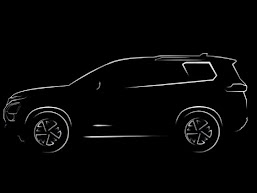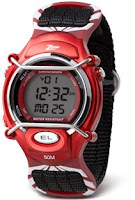Brand : Vivanta
Company : Indian Hotels Company Ltd ( IHCL)
Ad Agency : Rediffusion Y&R
Brand Analysis Count : 464
Vivanta is the new brand from Indian Hotels Company Ltd ( aka Taj Hotels & Resorts) launched as a result of a brand restructuring exercise. The new brand Vivanta will replace the Taj Residency brand and will represent IHCL's presence in the Upper Upscale segment of Indian hotel/hospitality market.Vivanta was initially launched in 2008 when IHCL rebranded three Taj Residency properties to Vivanta. IHCL tested and tweaked the brand for two years before the national roll out in 2010. Now around 19 Taj properties has been rebranded to Vivanta.

The rebranding of Taj Residency to Vivanta is a part of the Tata group to move from a " Branded House " to " House of Brands " brand portfolio structure. The move towards a basket of brands started with the launch of Ginger brand of hotels for the domestic budget business traveler. The Ginger brand launch was followed by the launch of The Gateway Hotels brand which saw many Taj properties being rebranded to " The Gateway Hotels ". Now the launch of Vivanta completes one phase of the very important brand restructuring exercise.
Now IHCL has the following brands in the Indian hotel segment :
Taj brand -- Targeting the most luxurious segment. The brand will have properties on the best locales and attract the most premium customers.
Vivanta : Will be 10-15 % cheaper than Taj Hotels and target the upper upscale segment of the market. The brand will have presence on major cities and tourist destinations and will attract the affluent customers.
The Gateway Hotels - Will be 10-15% cheaper than Vivanta and will target the upscale segment and the business travelers. This brand will be located in most cities which are frequented by business and leisure travelers and will attract young professionals.
Ginger : Will be the lowest priced hotels targeting the frequently traveling businessmen. The brand has successfully tapped the need for a chain of quality hotels which targets the travelers with limited budget.
The important question is regarding the rationale for such a brand portfolio decision. Isn't it better to have a branded house portfolio where all hotels will have the Taj brand ?
The move is very relevant for IHCL because this restructuring will prevent dilution of Taj brand which is perceived to be a premium luxury brand. The use of Taj brand for all hotel properties of IHCL made sense in all these years because the market was not highly segmented.
Now Indian hotel/hospitality market has matured and is witnessing lot of interest from domestic and international players. The who is who of hospitality industry is already in the Indian market and a lot is waiting to enter. It is in this context that IHCL had to relook the brand portfolio decisions. The consumers also have evolved and different class of consumers has evolved in recent years.
Since Taj was used to endorse all properties of IHCL, there is always a chance of different types of properties carrying the Taj brand. So in a city there will be two type of property - one luxurious and another upper scale carrying the same brand name. This can create problems interms of brand positioning. If IHCL needs to position Taj as a luxurious brand, it needs to have a consistency in terms of the physical evidence ( hotel properties ) and the core product ( service). This consistency cannot be possible when there are inconsistencies in terms of size of hotel properties and the level of service in those hotels.
Another issue with Branded House is that the firm will be constrained by the values /positioning of the core brand.Hence IHCL may not be able to tap into opportunities other than luxury hotels if they follow branded house strategy. The launch of Ginger in the budget segment is an effort by the company to move into tapping other opportunities presented by the market.
Now with the introduction of two brands - The Gateway Hotels and Vivanta, IHCL is now able to arrange the properties in accordance with the respective brand's positioning. Taj will now be an exclusive brand associating only with best properties and service promises. The other three brands will enable IHCL to tap into the opportunities of the market without being constrained by Taj 's brand positioning.
The next issue is whether the new brands will be able to retain the equity of Taj. According to press reports, IHCL was able to establish " The Gateway Hotels " as a credible brand. Ofcourse it cannot match the equity of Taj but the heritage and the loyal customers will see the brand through this transition period. The advantage is that IHCL can give a separate identity to these brands.
Vivanta is positioned as a young brand. The brand is targeting the new breed of young affluents. The service architecture also reflects the focus on the young rich traveler. According to the recent report in Business Standard, the brand has identified critical touch points where it could differentiate itself from other brands.To help the brand establish itself, Vivanta is currently endorsed by Taj brand. In the marketing communications, the branding is done as " Vivanta by Taj ". This endorsement will continue till Vivanta establish itself as an independent brand.
Vivanta brand name is inspired by the term Bon Vivant . The typical consumer profile for Vivanta is one who is sophisticated and have appreciation for good things in life.
Vivanta is currently running a print campaign announcing the launch. The ad positions the new brand promise and the youthful look for the brand.
See it here.
Consumers will definitely miss the Taj brand. The status and the feeling of pride when staying in Taj brand of hotels is now restricted to a select few.
In the long - term perspective, the move of IHCL has done the right thing. The brands need to be nurtured and it will be the service promise and delivery that will help these new brands to establish themselves as worthy successors of Taj.
Related brand


















